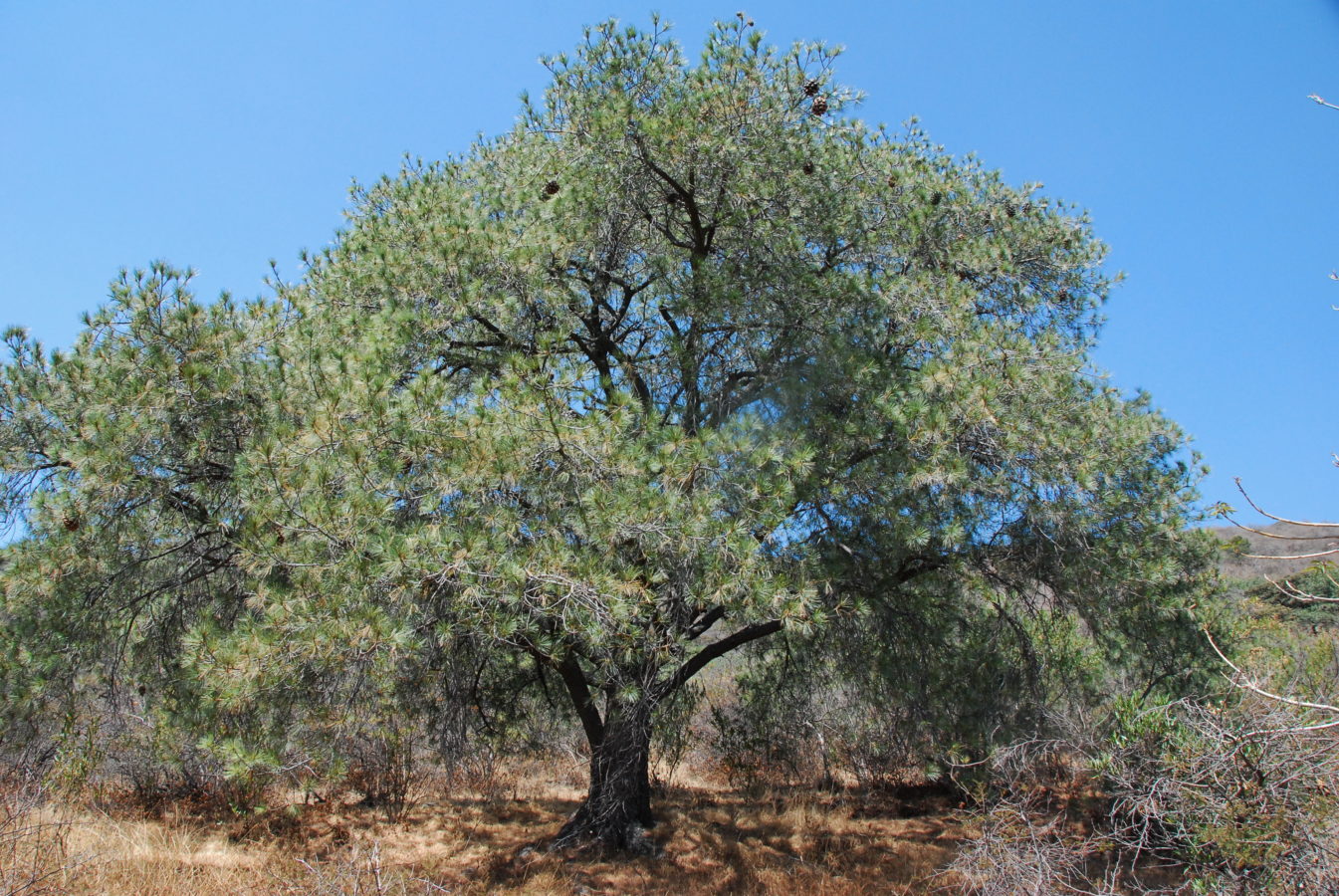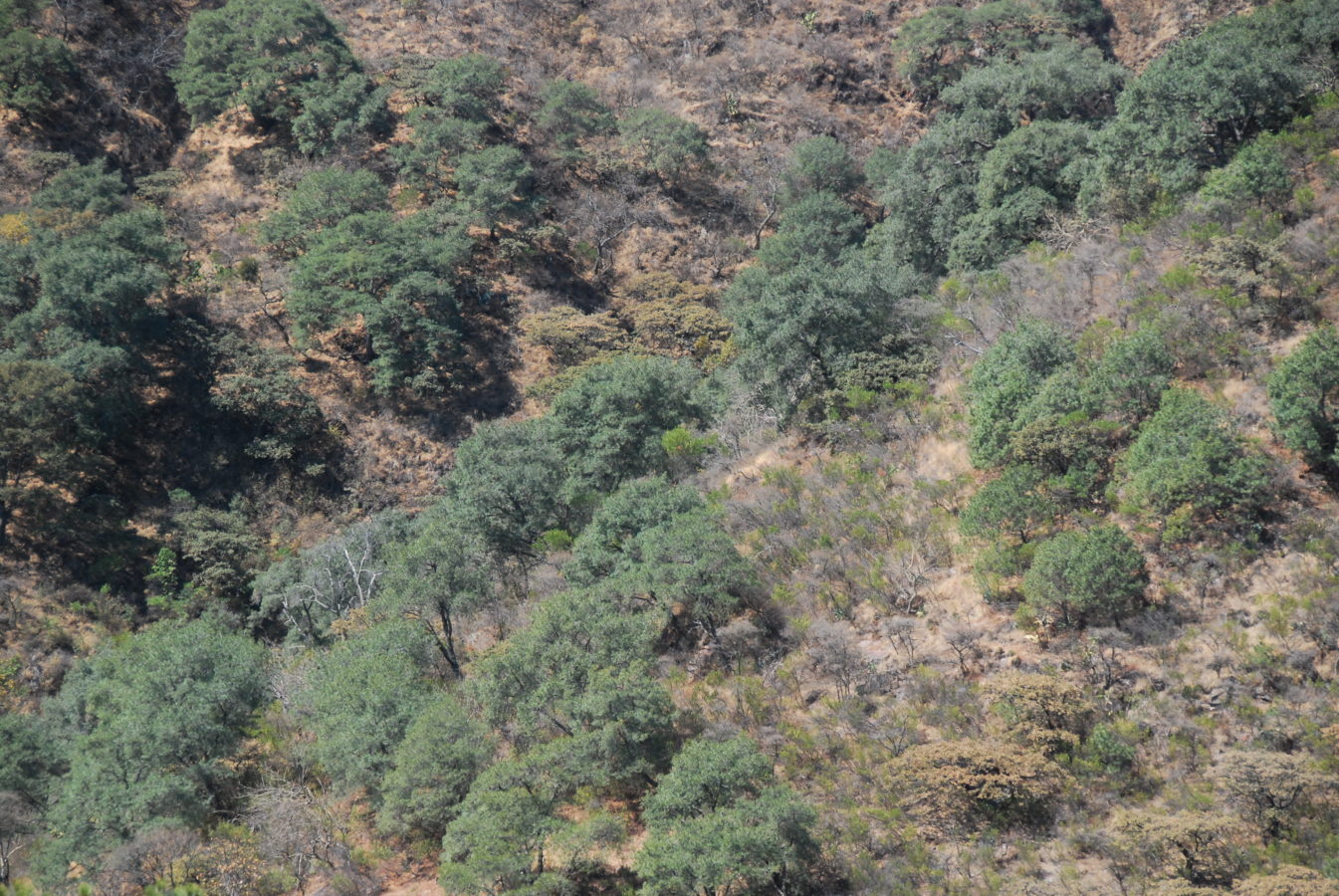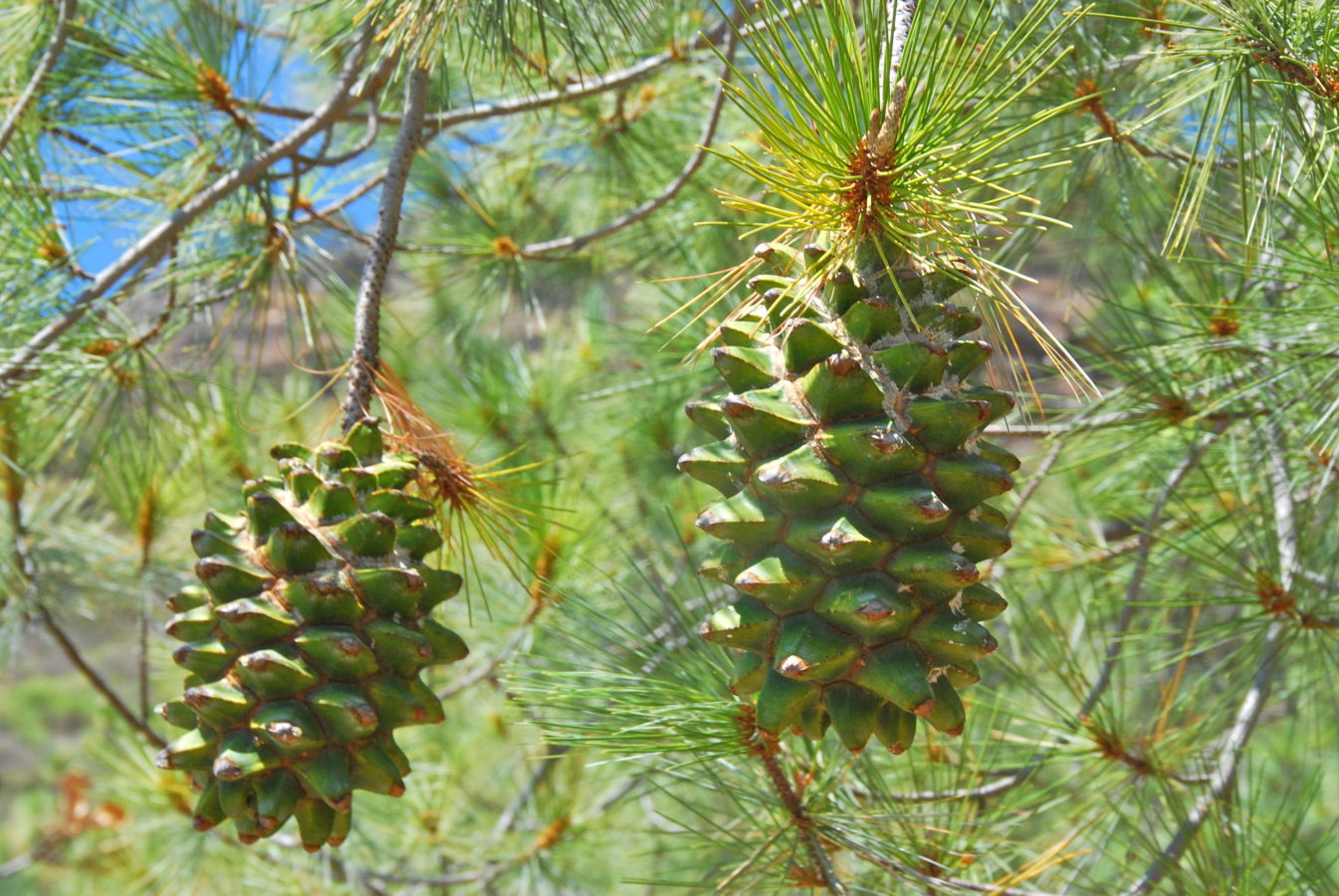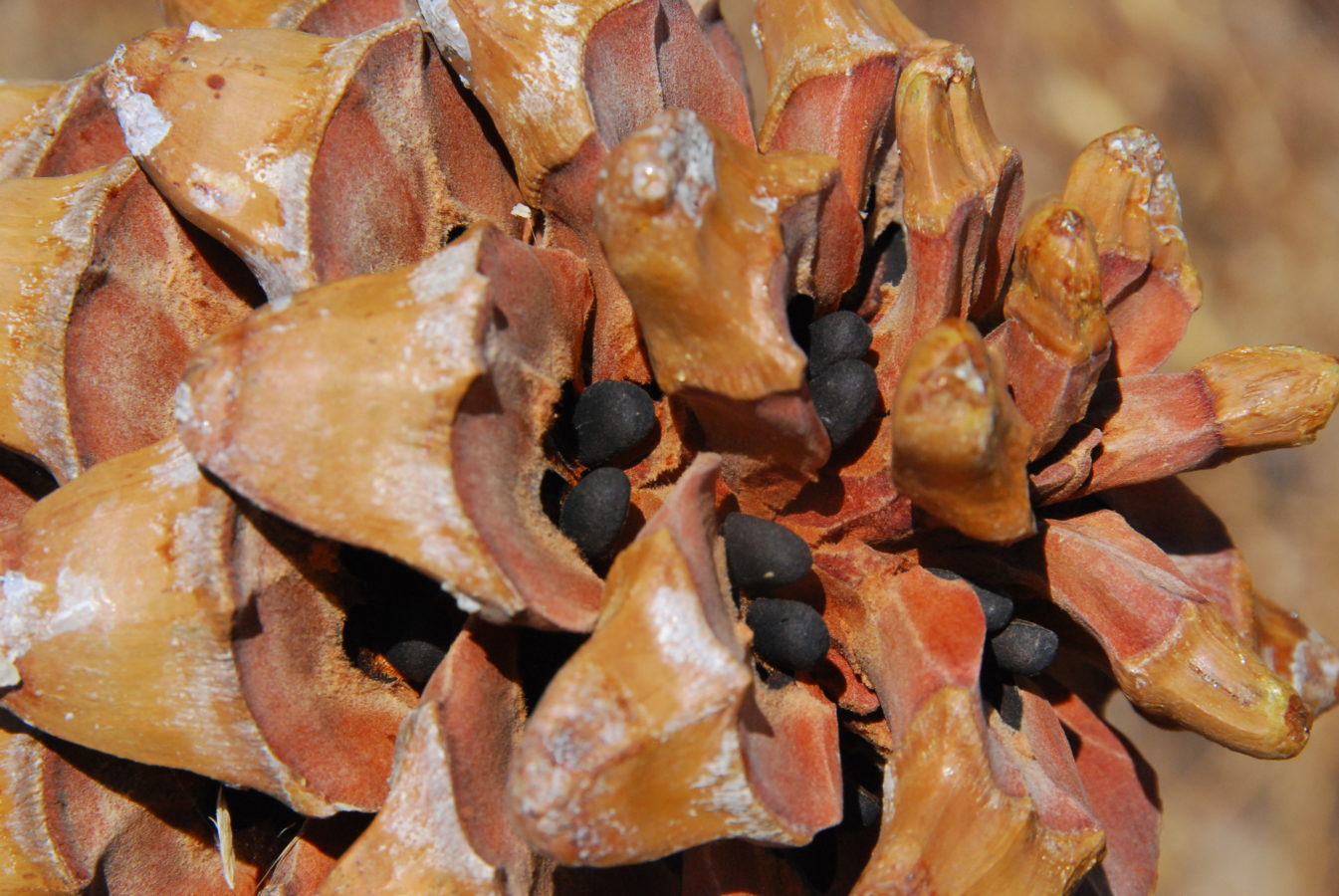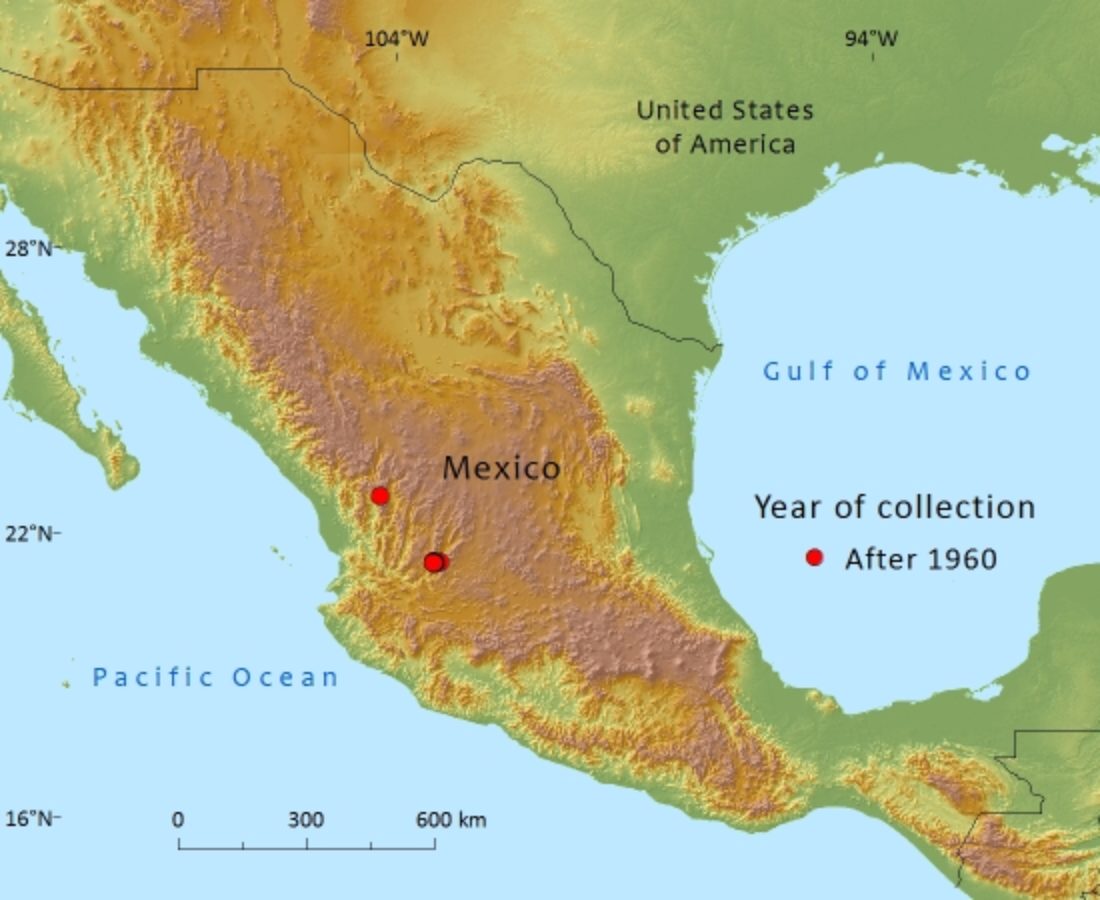Pinaceae
Pinus maximartinezii
Endemic to two locations in northern Mexico where the main threats are grazing by livestock and fire
Human Uses
Like other 'piñon' (pinyon pines) in Mexico, this species is of local importance for its nutritious, edible seeds (Lopez Mata, 2001), which are harvested by local people and marketed in the region. Due to its low stature and branching of the trunk, its timber is not used. In Mexico, it is sometimes planted as an ornamental tree; elsewhere it is only grown in a few botanic gardens (e.g. at the University of California in Berkeley) and research nurseries; its horticultural merits could be greater than that since it is not too difficult to grow from seed in the nursery. Young trees retain an attractive blue juvenile foliage for several years.
References and further reading
- Farjon, A. (2010). A Handbook of the World's Conifers. Koninklijke Brill, Leiden.
- Farjon, A. & Styles, B. (1997). Pinus (Pinaceae). Flora Neotropica. Monograph 75. The New York Botanical Garden, New York.
- Farjon, A. (2013). Pinus maximartinezii. In: IUCN 2013. IUCN Red List of Threatened Species. Version 2013.1. <www.iucnredlist.org>. Downloaded on 13 July 2013.
- González-Elizondo, M., Socorro González-Elizondo, M., Ruacho-González, L. & Molina Olvera, M. (2011). Pinus maximartinezii Rzed.,(Pinaceae), primer registro para Durango, segunda localidad para la especie. Acta Botanica Mexicana 96: 33-48.
- Lara Rodriguez, E.A. (1997). Caracterización y evaluación del bosque natural del pino azul (Pinus maximartinezii Rzed.) en el Cerro de Piñones de Juchipila, Zacatecas. Tesis de maestria en ciencias, Universidad Autónoma de Nuevo León.
- Ledig, F.T., Conkle, M.T., Bermejo, B., Eguiluz, T., Hodgskiss, P., Johnson, D.R. & Dvorak, W.S. (1999). Evidence for an extreme bottleneck in a rare Mexican pinyon: genetic diversity, disequilibrium, and the mating system in Pinus maximartinezii. Evolution 53(1): 91-99.
- López Mata, L. (2001). Proteins, Amino Acids and Fatty Acids Composition of Nuts from the Mexican Endemic Rarity, Pinus maximartinezii, and Its Conservation Implications. Interciencia 26: 606-610.
- López Mata, L. & I. E. Galván Escobedo. (2011). Extracción de semillas de Pinus maximartinezii y sus consecuencias poblacionales. Biodiversitas 98: 1-7.
- López-Mata, L.(2013). The impact of seed extraction on the population dynamics of Pinus maximartinezii. Acta Oecologica 49:39-44
